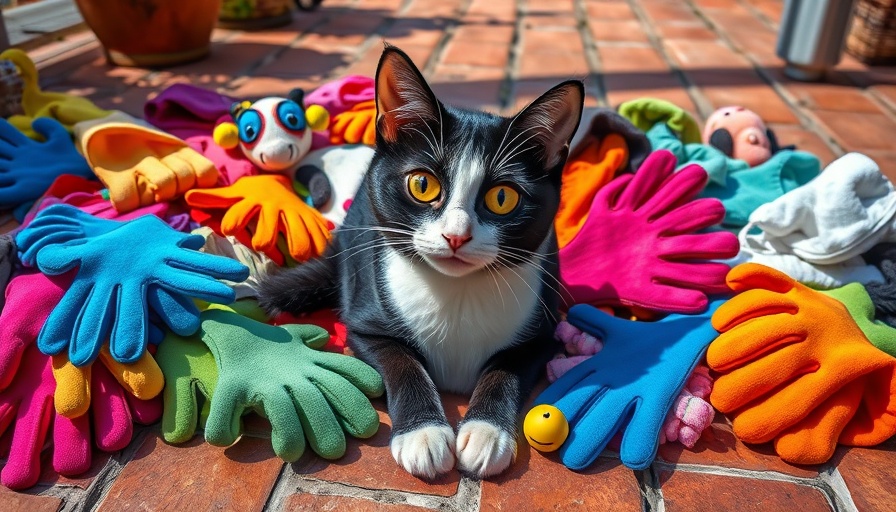
The Tale of a Cat Burglar: Meet Juno
Breaking news of a kleptomaniac kitty has captured hearts worldwide, featuring Juno, a Tuxedo domestic shorthair known for her unique predilection for pilfering. With an impressive tally exceeding 1,800 items since 2019, this captivating feline has transcended the realm of ordinary pet behavior to entrance communities across the globe.
Juno’s Unusual Beginnings
Juno’s journey began as an orphaned kitten found by Connie Geston in West Los Angeles in 2015. Initially, her wild spirit made it challenging for Connie to bond with her, but as Juno transitioned into a more relaxed companion, her curiosity led her to daily adventures outdoors. Little did anyone anticipate that her explorations would result in numerous intriguing additions to the home.
From Simple Cat to Community Hero
During the COVID-19 pandemic, Juno's reputation skyrocketed as she returned home with various items, such as plastic gloves and face masks. Her peculiar habit sparked admiration among neighbors, who jokingly nominated her for honorary mayor in 2020. Though her ambitions were thwarted by her feline nature, her acts contributed significantly to the community's morale during a challenging time.
A Collection of Hilarity
When her peculiar habit first emerged, Connie was merely puzzled; however, when the items began doubling significantly, she recognized the need to catalog Juno's collection. As amusing as it sounds, the items largely are of little monetary consequence, ranging from rags to toys, bringing laughter rather than anger among the victims of her kleptomania.
Can Cats Be Charitable?
In a delightful twist, Juno engaged in charitable endeavors to help local animal shelters and global humanitarian efforts. In 2021, she’s famously pledged $1 for every rag picked up, showcasing how her quirky behavior can take on a philanthropic dimension. The cute merchandise available on her website promotes her brand while also contributing to causes close to her heart.
The Implications for Pet Professionals
For professionals in the pet industry—veterinarians, trainers, nutritionists, and more—Juno’s story opens discussions on feline behavioral psychology. Understanding motivations behind actions like thievery can enhance training techniques, pet care practices, and overall receptivity to conditions related to boredom or inadequate interaction. By sharing stories like Juno's, professionals can educate pet parents on enriching their cats' environments.
Supporting the Pet Community
This unique case invites consideration of the broader implications within the pet community. Engaging local shelters and rescue organizations, while fostering relationships with pet accessory developers and pet parent-inspired clothiers, enriches lives. Juno's antics remind pet professionals to think creatively, strengthening the bond between pets and their owners.
Embracing Creativity Through Catio Building
Another lesson from Juno's peculiar life is the importance of outdoor access for indoor pets. Catios—a structure that allows cats to explore the outdoors safely—could be potential solutions to behavioral issues stemming from boredom. This innovative integration of outdoor play can decrease unwanted behaviors, fostering healthier, happier felines.
Emotional Impact and Connection with Pet Owners
For pet owners, stories like Juno's can evoke strong emotional connections, showcasing the quirky nature of pets while fostering a sense of community. Many can relate to their animals’ peculiar habits, affirming that individuality is part of the charm.
Conclusion: Let’s Support Our Furry Friends
Juno's adventures ultimately encourage pet owners and professionals alike to embrace creativity in their care strategies. By fostering environments where cats can explore and engage, we celebrate their unique behaviors. Join the conversation about innovative solutions in pet care, and let Juno inspire a collective effort to ensure that every pet lives their fullest life.
 Add Row
Add Row  Add
Add 




Write A Comment